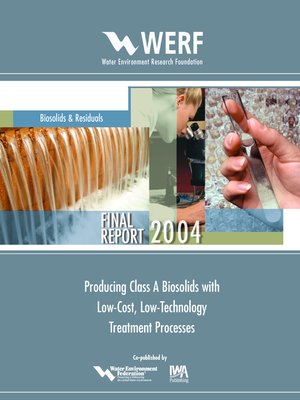Producing Class a Biosolids With Low-Cost, Low-Technology Treatment Processes
ebook ∣ WERF Research Report
By J. B. Farrell

Sign up to save your library
With an OverDrive account, you can save your favorite libraries for at-a-glance information about availability. Find out more about OverDrive accounts.
Find this title in Libby, the library reading app by OverDrive.



Search for a digital library with this title
Title found at these libraries:
| Library Name | Distance |
|---|---|
| Loading... |
Class A biosolids can be produced using low-cost, low-technology biosolids treatment processes including lagoon storage, air drying, and cake storage. This project reviewed the available literature and municipal agency data about these processes. This report presents design and operating guidelines distilled from the review process. It is designed for wastewater treatment plant (WWTP) managers, operators, and engineers who wish to discern whether these processes, used alone or in combination, might be practically applied at specific plants. This report also describes the U.S. regulatory environment in relation to producing Class A Biosolids and defining Class A processes. It also presents a list of recommended research needs. This report: Familiarizes WWTP managers, operators, and engineers with low-cost, low-technology biosolids treatment processes, likely pathogen kill mechanisms, and practices that have reduced pathogen densities to Class A levels at scales ranging from laboratory tests to large municipal biosolids treatment operations. Presents guidelines for producing Class A biosolids under a variety of conditions. Describes low-technology treatment processes within the Class A regulatory framework, identifies satisfactory end conditions for products created from low-tech treatment processes, and provides guidance in developing national or site-specific certification as processes equivalent to a process to further reduce pathogens (PFRP).







